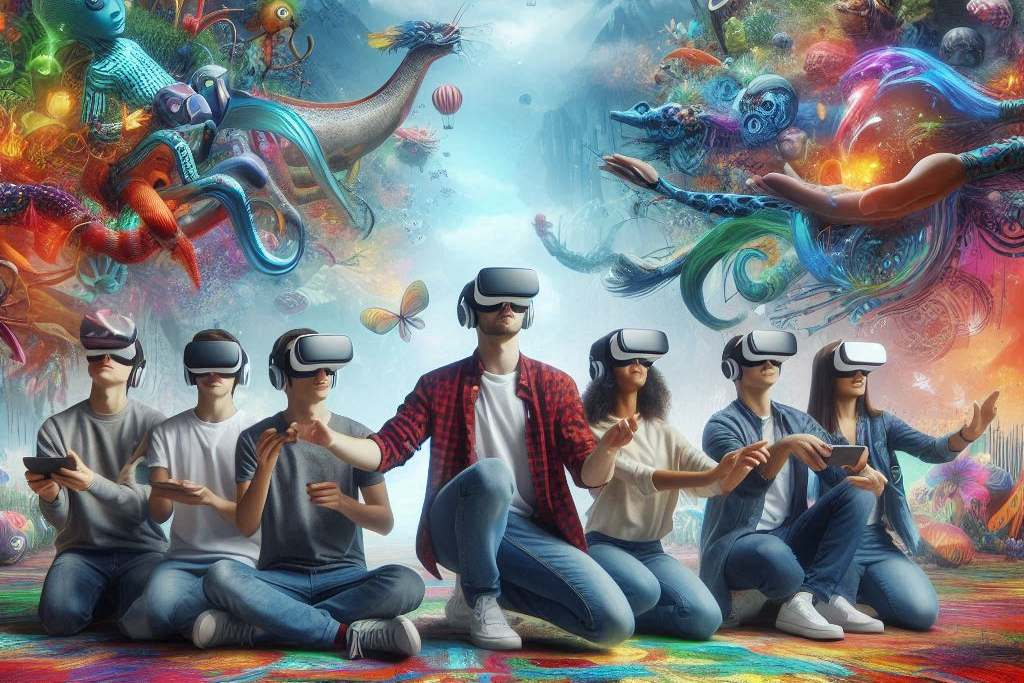Introduction
The video game industry has undergone remarkable transformations since its inception, driven by rapid technological advancements. From rudimentary pixelated graphics to immersive virtual realities, video games have evolved into a complex and engaging medium that captivates millions worldwide. This article explores the latest advancements in video game technology, shedding light on how they enhance gameplay experiences and shape the future of the industry.
The Rise of Realistic Graphics
One of the most significant advancements in video game technology is the improvement in graphics quality. The introduction of high-definition (HD) and 4K resolution has allowed developers to create stunning visual experiences. Realistic character models, detailed environments, and lifelike animations are now the norm rather than the exception. Technologies like ray tracing, which simulates realistic lighting and shadows, have elevated the visual fidelity of games to unprecedented levels.
For instance, titles such as “Cyberpunk 2077” and “The Last of Us Part II” showcase how these graphical enhancements can create immersive worlds that draw players into the story. With powerful graphics processing units (GPUs) from companies like NVIDIA and AMD, developers can render intricate details that make virtual environments feel alive.
Artificial Intelligence in Gaming
Artificial intelligence (AI) has also made significant strides, fundamentally changing how characters and enemies behave in video games. Advanced AI algorithms enable non-playable characters (NPCs) to exhibit more realistic behaviors and interactions, providing players with dynamic and challenging gameplay experiences. Machine learning techniques allow NPCs to adapt to player strategies, making each playthrough unique.
For example, games like “Middle-earth: Shadow of Mordor” introduced a Nemesis system, where enemies remembered past encounters with players and adapted their tactics accordingly. This type of AI not only enhances gameplay but also fosters a deeper emotional connection between players and the game world.
Immersive Virtual Reality
Virtual reality (VR) has emerged as one of the most groundbreaking advancements in video game technology. VR headsets like the Oculus Rift, HTC Vive, and PlayStation VR offer players an immersive experience that transcends traditional gaming. By using motion tracking and spatial audio, players can feel as if they are truly part of the game world.
Recent advancements in VR technology, such as improved resolution, wider fields of view, and more intuitive controls, have made the experience more accessible and enjoyable. Titles like “Half-Life: Alyx” and “Beat Saber” demonstrate the potential of VR to create captivating and interactive experiences that were previously unimaginable.
Cloud Gaming Revolution
Cloud gaming is another area experiencing rapid development, allowing players to stream games directly to their devices without the need for powerful hardware. Services like Google Stadia, NVIDIA GeForce NOW, and Xbox Cloud Gaming leverage cloud computing to deliver high-quality gaming experiences over the internet. This technology eliminates the barrier of expensive gaming consoles and PCs, making gaming more accessible to a broader audience.
Cloud gaming also enables cross-platform play, allowing friends to game together regardless of their devices. This interconnectedness fosters a sense of community and inclusivity in the gaming world, paving the way for new social experiences.
Enhanced Multiplayer Experiences
Advancements in online infrastructure have significantly improved multiplayer gaming. With the rise of high-speed internet and dedicated servers, players can now enjoy lag-free experiences, making competitive gaming more enjoyable. Technologies like peer-to-peer networking and cloud-based matchmaking have revolutionized how players connect and compete with one another.
Furthermore, the rise of esports has propelled the demand for high-quality competitive gaming experiences. Games like “Fortnite”, “League of Legends”, and “Valorant” have established robust ecosystems with tournaments, sponsorships, and professional teams, showcasing the potential of multiplayer gaming as a viable career path.
The Impact of Augmented Reality
While virtual reality immerses players in digital worlds, augmented reality (AR) overlays digital elements onto the real world, creating unique gameplay experiences. Games like “Pokémon GO” have demonstrated the potential of AR to engage players in their environments, blending physical activity with gaming.
The advancements in smartphone technology, such as improved cameras and sensors, have made AR experiences more seamless and interactive. Future developments in AR technology could lead to even more innovative gameplay mechanics and experiences that blur the lines between reality and virtuality.
Conclusion
The advancements in video game technology are continually reshaping the gaming landscape, providing players with richer and more immersive experiences. From stunning graphics and intelligent AI to the rise of virtual and augmented reality, the future of gaming holds limitless possibilities. As technology continues to evolve, players can look forward to new innovations that will further enhance the way we play, connect, and experience the world of video games.









